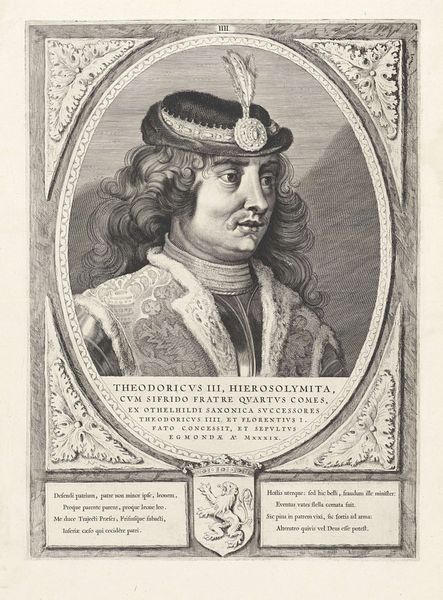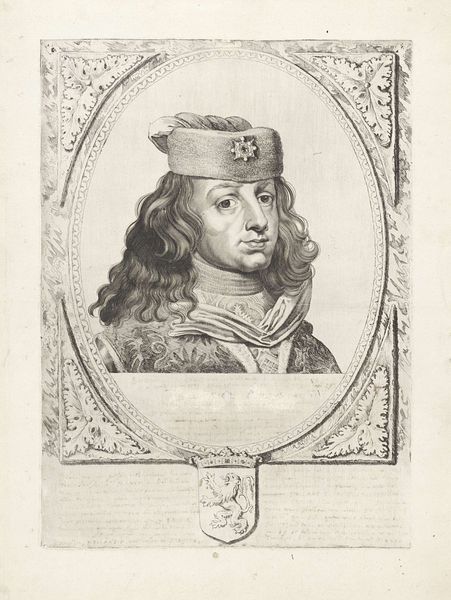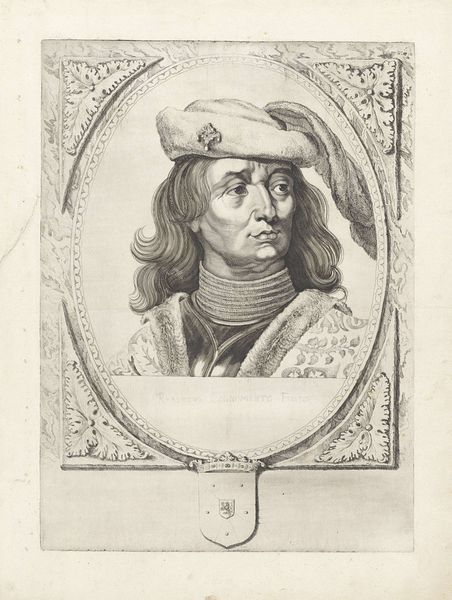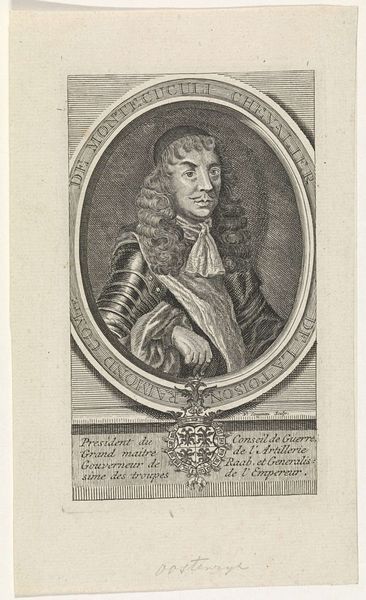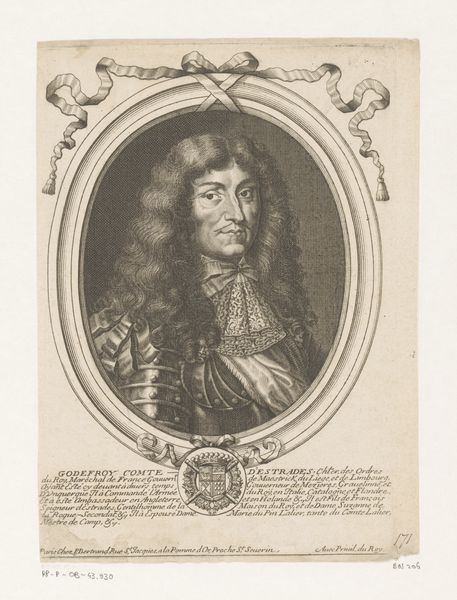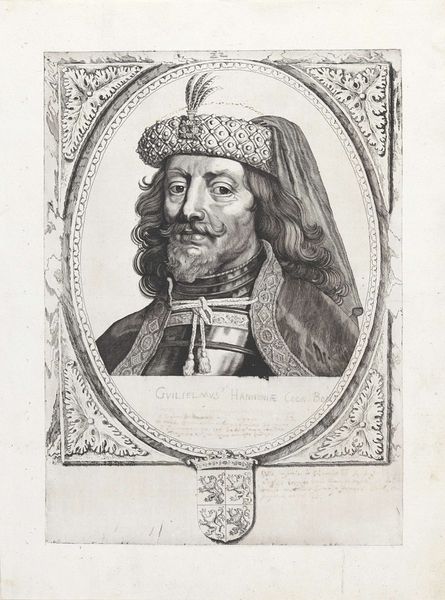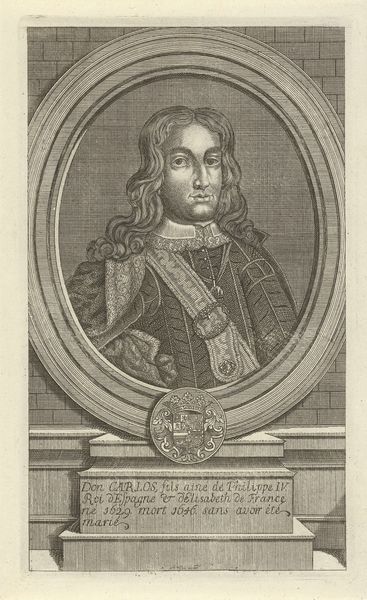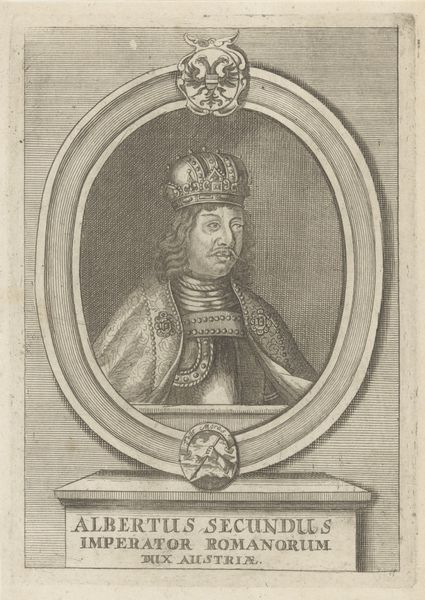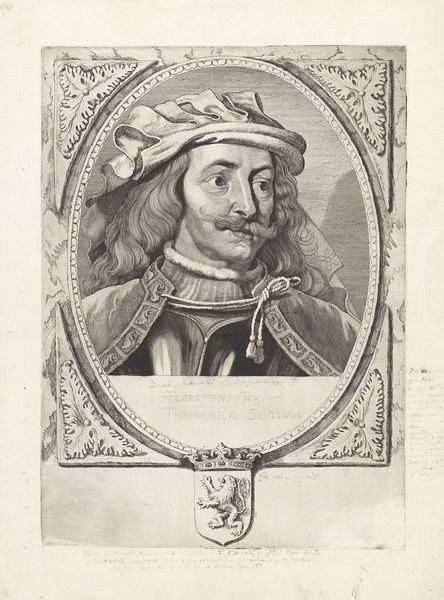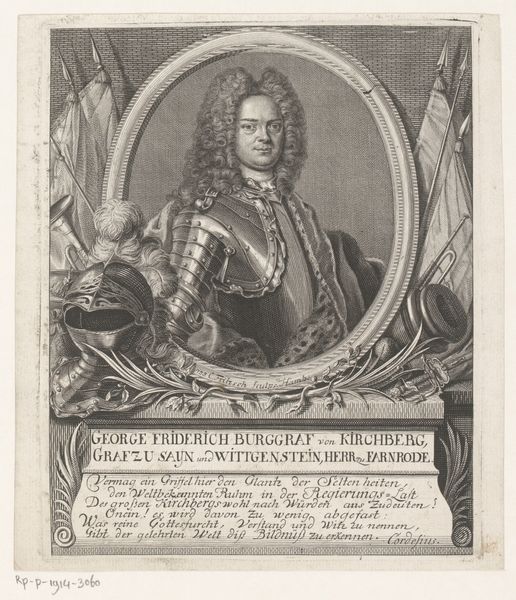
drawing, intaglio, pen
#
portrait
#
drawing
#
baroque
#
intaglio
#
charcoal drawing
#
figuration
#
personal sketchbook
#
pencil drawing
#
line
#
pen
#
history-painting
#
academic-art
Dimensions: height 406 mm, width 295 mm
Copyright: Rijks Museum: Open Domain
Curator: We’re looking at a Baroque intaglio print titled “Portret van Dirk III, graaf van Holland,” created around 1650 by Cornelis Visscher. It resides here at the Rijksmuseum. What’s your immediate reaction to this piece? Editor: Austere elegance. The subject’s expression is serious, but the ornate oval frame and his detailed attire lend a regal quality to the entire composition. There's a fascinating tension between severity and embellishment here. Curator: Precisely! And thinking about that frame – it is essential to note the means of production behind this image. Intaglio prints such as these, widely circulated, brought images of power to a broader audience, becoming a vital tool in shaping and disseminating political ideology. What about the materiality itself? How does the pen, and line work inform your analysis? Editor: The precision of the line work is captivating. Notice the intricate details in the fur trim of his coat and the cascading curls of his hair. The medium here enables Visscher to capture textures, offering insight into both the status of the portrayed figure and the technical virtuosity valued within the artistic context of the time. Curator: Consider also the social dynamics inherent in portraiture. While this work presents Dirk III, it is also a product of Visscher’s labor, part of the market for printed imagery catering to certain tastes, class interests and cultural values in 17th-century Holland. The print then has to serve as both an artwork and a trade commodity, and these two factors play off one another. Editor: That’s a critical point. But I am also drawn to the use of line and its expressive capability. See the subtle modulation in tone— achieved solely through varying line density. It's like a map etched onto the copper plate to represent a face. And that is compelling when talking about Baroque art. Curator: Indeed, and we can't forget that Visscher likely worked within a printmaking workshop, subject to the economic pressures and expectations of the marketplace. His success, in a way, hinged on meeting certain aesthetic standards. The way social class or power get depicted also has consequences, too. Editor: You have given me another outlook. It is all rather layered, when we think of what to celebrate in terms of artistic traditions, labor, the market and so on... Thank you. Curator: Of course. Looking at Visscher's work helps reveal that art isn't divorced from how, where, and why things are made. Thanks for being a part of it.
Comments
No comments
Be the first to comment and join the conversation on the ultimate creative platform.
